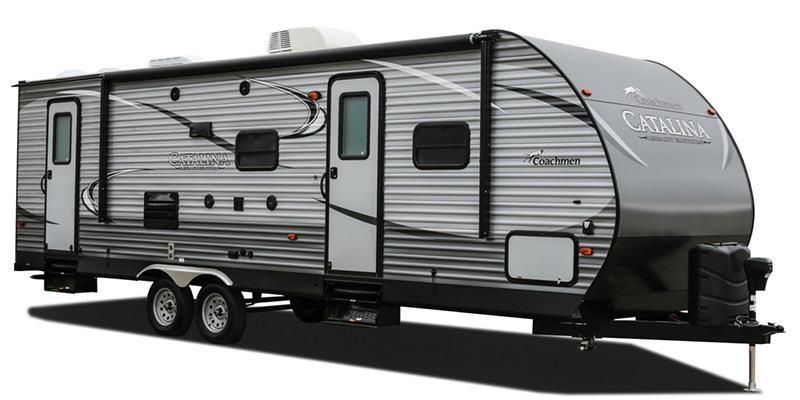
Crosswind is what initiates most loss-of-control accidents. Can be natural winds (hard gust), or from oncoming traffic. Both are most dangerous when on the down-slope of a grade.
Three Parts: A square box TT (which this is) allows crosswinds to build in force the length of the trailer coupled to a floor height too high to be optimum (slide-out roadworthiness problem) where the cheap suspension design is leaf-sprung type which exacerbates those problems.
As with tractor-trailers, the REAR of the trailer will lift due to the force AND that air is passing underneath in great volume.
Lower floor height plus independent suspension is first. “Best” is that in a true aero design. Aero is where all joins of walls/floors/roof have substantial radius as air is not trapped — pulls as it escapes versus being trapped and pushing — and nearly no crossflow underneath).
Square box travel trailers aren’t heavy enough to resist much. With a big truck and 47,000-lbs in the box WITH the trailer tandems rolled back there “can” be enough resistance to heavy crosswinds in SOME instances.
Too high ground clearance, squared edges, AND the sail area behind the axles combine to cause tail lift BEFORE YOU KNOW IT AT THE STEERING WHEEL (4WD pickup the worst TV for this reason among others).
A HENSLEY patent hitch is “the solution” (having made all other types obsolete), but the TT design is the major problem.
An aero TT & Hensley (or Pro Pride) is where crosswind problems are fairly well eliminated. 5th wheel trailers are worse than conventional due to the huge sail area plus shared design problems. A hitch only works so well is the point. Bad TT design proceeds it.
High-risk trailering moments are wind and/or down-slope related where the forward motion of the rig isn’t enough to keep slack out of the hitch rigging against external factors. When sail area, non-aero design and poor suspension are added, the risk is that much greater. Can’t slow the rig soon enough and safely enough to avoid the problems of hard gusts once the operator is constantly correcting for wind.
One can go higher than 15% TW, but it won’t solve tail-lift and loss of control at the TV rear axle. The contact patch of the rear tires is the whole ballgame.
In short, if the wind put you onto the shoulder, THAT was your guardian angel shouting at you.
.
